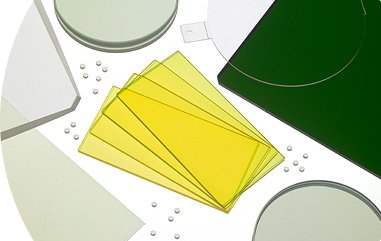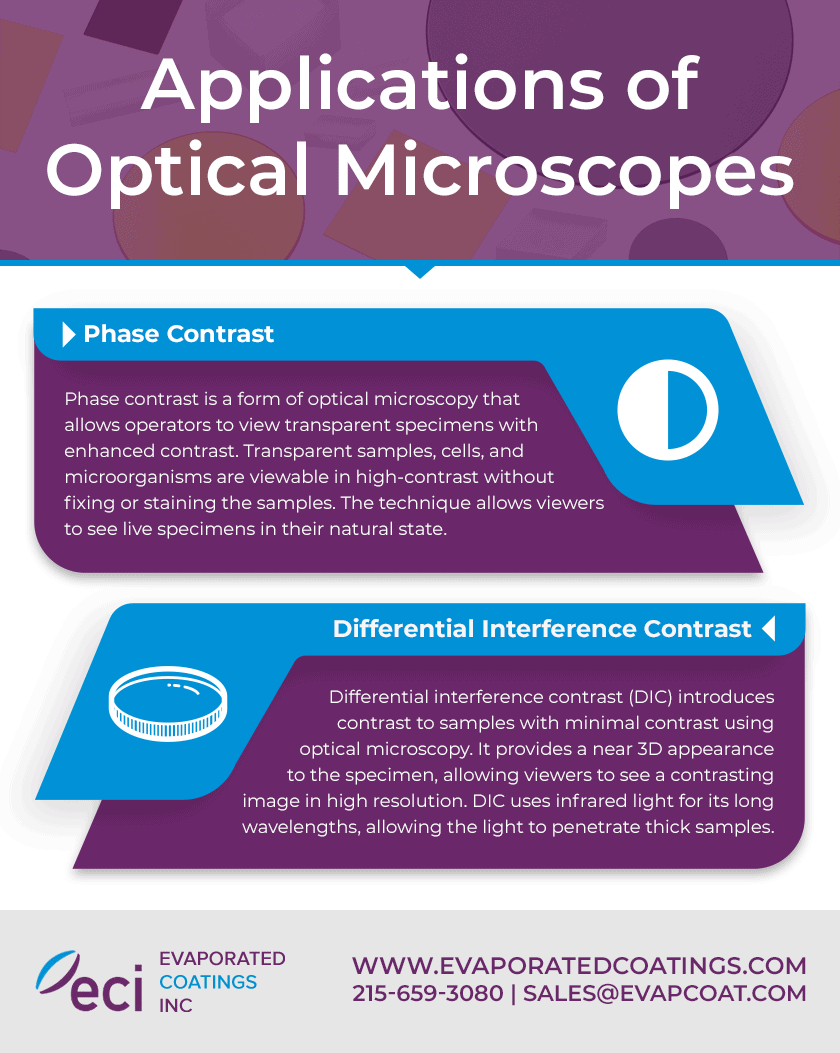What is an Optical Notch Filter and What Do They Do?
Leave a Comment Optical notch filters are devices designed to attenuate light within a specific wavelength range to a very low level while transmitting most wavelengths with little intensity loss. Other names for optical notch filters include band-rejection or band-stop filters.
Optical notch filters are devices designed to attenuate light within a specific wavelength range to a very low level while transmitting most wavelengths with little intensity loss. Other names for optical notch filters include band-rejection or band-stop filters.
They do the opposite of bandpass filters, a different type of filter that provides high out-of-band rejection and high in-band transmission, thus only allowing light transmission within a small wavelength range.
The tilt of the optical notch filter with respect to the incident light is its angle of incidence (AOI). If the incident light is normal to a notch filter, the AOI is 0°. Transmission depends on the AOI for all-dielectric stack filters. As the AOI increases, the central wavelength of the hindering region shifts to shorter wavelengths.
Optical Notch Filter Frequencies
Optical notch filters reject or block a specific wavelength region while transmitting on either side of the blocking region. Traditional notch filters offer up to 85% peak transmission.
Optical Density
Optical density (OD) refers to the amount of energy that an optical notch filter rejects or blocks. If the optical density value is high, the filter blocks more energy, resulting in low transmission. If the optical density value is low, the filter rejects less energy, resulting in high transmission.
Optical density is crucial in establishing the strength of a filter. Its measurements can help in measuring the growth of a microorganism’s culture, biomass concentration, and other analytical techniques used in the life sciences.
You can find notch filters of different bandwidths in the market, but the most common types are narrowband filters.
Traditional band-stop filters also come with harmonic rejection bands. However, you need to worry about these only where wide pass bands are necessary. Although it is possible to adjust coating designs to remove harmonic rejection bands where they are not required, such coatings are more sophisticated and need to be thicker.
Optical Notch Filter Applications
 Optical notch filters have many applications where there is a need to transmit some wavelengths while reflecting or blocking others.
Optical notch filters have many applications where there is a need to transmit some wavelengths while reflecting or blocking others.
These include:
- Spectroscopy: Spectroscopy uses optical notch filters to evaluate the rotational and vibrational characteristics of molecular and crystal structures. Notch filters also assist scientists in evaluating the properties of molecules by isolating the specific wavelengths of interest. This feature helps in evaluating forensics evidence, identification of an unknown substance, drug detection, and evaluation of how molecular structures respond to certain environments.
- Optical communication systems: These systems use optical notch filters to deter any distortions that can get into the light pathway. For instance, they are useful for laser safety applications such as laser eye protection, whereby safety glasses have a coating to block potentially harmful wavelengths.
- Analytical measurements: Notch filters, through optical density measurements, help measure analytical techniques such as the growth of micro-cultures and biomass concentration.
- Life Sciences: Optical notch filters are crucial in life science applications such as confocal or multi-photon microscopy, Raman spectroscopy, and more.
- Multi-band rejection: OD 4 or OD 6 optical notch filters have a multi-notch capability. Notch filters with such capabilities are useful in applications that require the rejection of the multiple narrow bands without using a multi-filter setup. OD 4 filters are great for applications that require narrow rejection bands of ±2.5% of the center wavelength and more than 99% reflection of the designated laser wavelength. On the other hand, OD 6 filters are useful for applications that require deep blocking of a narrow wavelength range while providing broad transmission of the other wavelengths. The applications include integration into life science systems, laser-based Raman spectroscopy, and fluorescence.
Contact Evaporated Coatings for Your Optical Notch Filter Projects
Optical notch Filters selectively block a section of the spectrum while allowing the transmission of all other wavelengths. They are useful where there is a need to transmit some wavelengths while reflecting or blocking others, e.g., in spectroscopy, optical communication, and life-science applications.
At Evaporated Coatings, Inc., we are the best in helping our customers implement optical notch filter projects for narrowband, broadband and multiband applications. Our goal is to give our customers a product that meets or exceeds their specifications and all other compliance requirements. Also, we consistently strive to enhance customer satisfaction by implementing an effective quality management system, recruiting a knowledgeable team, applying risk-based thinking, and continual improvement.
Contact us for all your optical notch filter project needs or request a quote to get started.

 Anti-reflective coatings are suitable for many applications requiring optimal image quality. This is because they consist of a single or multiple layers, which are intended to create destructive interference in reflected light. In turn, this permits the maximum level of light transmission without sacrificing image quality.
Anti-reflective coatings are suitable for many applications requiring optimal image quality. This is because they consist of a single or multiple layers, which are intended to create destructive interference in reflected light. In turn, this permits the maximum level of light transmission without sacrificing image quality. Absorptive filters have coatings made from organic and inorganic materials. These materials enable the filter to absorb the undesirable wavelengths and transmit the desirable wavelengths. This design ensures that no energy is reflected back toward the light source.
Absorptive filters have coatings made from organic and inorganic materials. These materials enable the filter to absorb the undesirable wavelengths and transmit the desirable wavelengths. This design ensures that no energy is reflected back toward the light source. In contrast to absorptive filters, dichroic filters—also called thin-film filters or interference filters—have coatings that enable them to reflect the undesirable wavelengths and transmit the desirable wavelengths. The thickness and properties of the coatings determine which wavelengths are reflected and which wavelengths are transmitted. These types of optical filters are highly accurate, enabling users to target a small range of wavelengths.
In contrast to absorptive filters, dichroic filters—also called thin-film filters or interference filters—have coatings that enable them to reflect the undesirable wavelengths and transmit the desirable wavelengths. The thickness and properties of the coatings determine which wavelengths are reflected and which wavelengths are transmitted. These types of optical filters are highly accurate, enabling users to target a small range of wavelengths. Notch filters—also called band-stop filters or band-reject filters—are designed to block a specific frequency band (i.e., the stopband frequency range). Any wavelengths above or below this range are allowed to pass through freely. These types of optical filters are ideal for applications involving the combination of two or more signals since they can help isolate out interference.
Notch filters—also called band-stop filters or band-reject filters—are designed to block a specific frequency band (i.e., the stopband frequency range). Any wavelengths above or below this range are allowed to pass through freely. These types of optical filters are ideal for applications involving the combination of two or more signals since they can help isolate out interference. In contrast to notch filters, bandpass filters are designed to block every frequency except for a small range. They are a combination of shortpass filters and longpass filters—filtering out any wavelengths that are too short or too long. This cutoff range can be lengthened or narrowed by adjusting the number of layers in the filter.
In contrast to notch filters, bandpass filters are designed to block every frequency except for a small range. They are a combination of shortpass filters and longpass filters—filtering out any wavelengths that are too short or too long. This cutoff range can be lengthened or narrowed by adjusting the number of layers in the filter. Shortpass filters are designed to transmit wavelengths below a set length determined by the optical coating and substrate. Any wavelengths that are longer than that point are blocked. These types of optical filters are commonly used to isolate specific higher regions of a broad spectrum and in conjunction with longpass filters for bandpass filtration applications. Typical applications include chemical analysis systems.
Shortpass filters are designed to transmit wavelengths below a set length determined by the optical coating and substrate. Any wavelengths that are longer than that point are blocked. These types of optical filters are commonly used to isolate specific higher regions of a broad spectrum and in conjunction with longpass filters for bandpass filtration applications. Typical applications include chemical analysis systems. Longpass filters are designed to transmit wavelengths above a set length determined by the optical coating and substrate. Any wavelengths that are shorter than that point are blocked. Typical applications include fluorescent spectroscopy systems. Additionally, they are commonly used in conjunction with shortpass filters for bandpass filtration applications.
Longpass filters are designed to transmit wavelengths above a set length determined by the optical coating and substrate. Any wavelengths that are shorter than that point are blocked. Typical applications include fluorescent spectroscopy systems. Additionally, they are commonly used in conjunction with shortpass filters for bandpass filtration applications.
